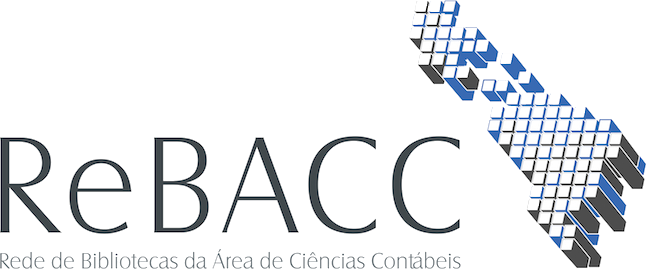Use este identificador para citar ou linkar para este item:
http://rebacc.crcrj.org.br/handle/123456789/1465| metadata.atena.dc.title: | ANÁLISE E MENSURAÇÃO DO RISCO DE CRÉDITO: O MODELO EM USO NO BANCO NACIONAL DE DESENVOLVIMENTO ECONÔMICO E SOCIAL – BNDES The analysis and measurement of credit risk: the model in use at The National Bank Of Economic And Social Development (BNDES) |
| metadata.atena.dc.creator: | Maria Elena Gava Reddo Alves Fernando Pereira Tostes |
| metadata.atena.dc.subject: | Risco de Crédito; Classificação de Risco; Central de Risco de Crédito; Matriz Quantitativa; Matriz Qualitativa; Parametrização Estatística; Escalas de Risco; Precificação de Empréstimos; Credit Risk; Ratings; Risk Credit Central; Matrix Quantita |
| metadata.atena.dc.date.issued: | 2014-11-12 |
| metadata.atena.dc.publisher: | REVISTA DE CONTABILIDADE DO MESTRADO EM CIÊNCIAS CONTÁBEIS DA UERJ |
| metadata.atena.dc.description: | Até a implantação do Plano Real, as elevadas taxas de inflação inibiam o crescimento do mercado de empréstimos. As operações de crédito que tinham componentes de risco eram, basicamente, constituídas por operações de curtíssimo prazo, cuja análise do risco, em muitos casos, resumia-se na avaliação
das garantias oferecidas e no exame de referências cadastrais.
As mudanças ocorridas na economia brasileira a partir de então, aliadas ao interesse em acompanhar a prática internacional, estimularam a criação e utilização de sistemas
de avaliação e administração do risco de crédito. As grandes instituições financeiras passaram a desenvolver e implementar técnicas de avaliação e mensuração do risco de crédito,
atribuindo “ratings”, que representam a opinião sobre a capacidade de cumprimento dos compromissos financeiros. O rating de um título é um dos fatores que se considera na
formação da taxa de juros e é utilizado para avaliar empresas, países ou operações relacionadas a pagamentos futuros.
Desde 1993, o Banco Nacional de Desenvolvimento Econômico e Social –BNDES desenvolveu um modelo de classificação de risco de crédito, o qual vem sendo utilizado para aferir o nível de risco das empresas, orientar suas decisões de crédito e
precificar suas operações. Neste trabalho é apresentado o modelo adotado pelo BNDES, a descrição de seu processo de elaboração, os indicadores utilizados e em que medida a Ciência Contábil a contribuiu para o seu desenvolvimento.
Palavras-chave: Risco de Crédito, Classificação de Risco, Central de Risco de Crédito, Matriz Quantitativa, Matriz qualitativa, Parametrização Estatística, Escalas de Risco, Precificação de Empréstimos.
ABSTRACT
Prior to the implementation of the Real Plan, the high inflation rates weakened the growth of the credit market. Credit operations that carried risk components were basically
made on a very short-term basis. In many cases, in order to be able to appraise this risk factor, an evaluation of guarantees had to be performed, as well as an examination of record
references. The changes witnessed in the Brazilian
economy since then, combined with the concern of following international practices have stimulated a more sophisticated creation and use of evaluation systems and credit risk
administration. Big financial institutions started to develop and implement evaluation techniques and assessment of the credit risk attributing “ratings” that represented their opinions about the capacity of accomplishment of financial commitment. A bond´s rating is one of the factors that is considered in the
formation of the interest rates and is used to evaluate companys, countries or operations related to future payments.
Since 1993, the Banco Nacional de Desenvolvimento Econômico e Social (BNDES, National Bank for Economical and Social
Development), created a classification model, which have been used to compare the level of risk, counsel credit decisions and assign a value to operations. In this study the model and the credit risk measurement utilized by BNDES is presented,
describing its elaboration process, the financial indicators used and measures the contribution of Accounting Sciences for its development.
Keywords: Credit Risk, Ratings, Risk Credit Central, Matrix Quantitative, Matrix Qualitative, Statistical Parameter, Risk Scale, Pricing. Prior to the implementation of the Real Plan, the high inflation rates weakened the growth of the credit market. Credit operations that carried risk components were basically made on a very short-term basis. In many cases, in order to be able to appraise this risk factor, an evaluation of guarantees had to be performed, as well as an examination of recordreferences. The changes witnessed in the Brazilianeconomy since then, combined with the concern of following international practices have stimulated a more sophisticated creation and use of evaluation systems and credit risk administration. Big financial institutions started to develop and implement evaluation techniques and assessment of the credit risk attributing “ratings” that represented their opinions about the capacity of accomplishment of financial commitment. A bond´s rating is one of the factors that is considered in the formation of the interest rates and is used to evaluate companys, countries or operations related to future payments.Since 1993, the Banco Nacional de Desenvolvimento Econômico e Social (BNDES, National Bank for Economical and Social Development), created a classification model, which have been used to compare the level of risk, counsel credit decisions and assign a value to operations. In this study the model and the credit risk measurement utilized by BNDES is presented, describing its elaboration process, the financial indicators used and measures the contribution of Accounting Sciences for its development.Keywords: Credit Risk, Ratings, Risk Credit Central, Matrix Quantitative, Matrix Qualitative, Statistical Parameter, Risk Scale, Pricing. |
| metadata.atena.dc.identifier.uri: | http://rebacc.crcrj.org.br/handle/123456789/1465 |
| metadata.atena.dc.identifier: | http://www.atena.org.br/revista/ojs-2.2.3-06/index.php/UERJ/article/view/693 |
| Aparece nas coleções: | Artigos - Atena |
Arquivos associados a este item:
Não existem arquivos associados a este item.
Os itens no repositório estão protegidos por copyright, com todos os direitos reservados, salvo quando é indicado o contrário.

